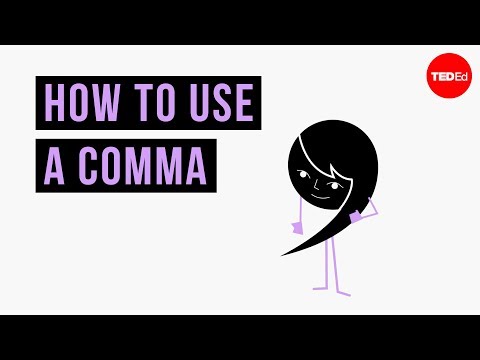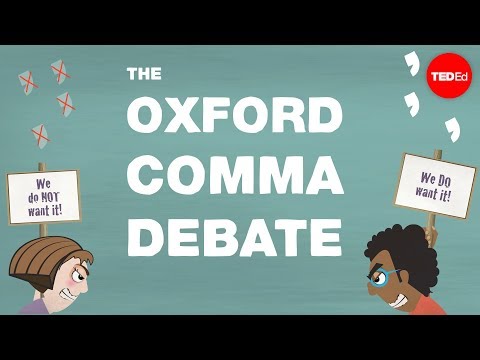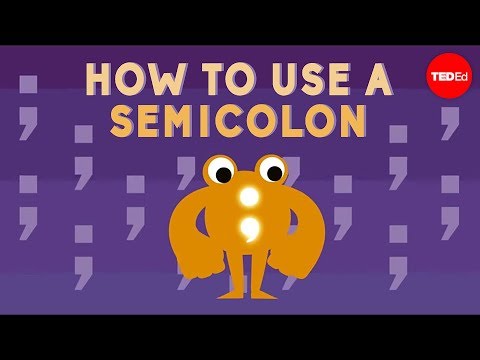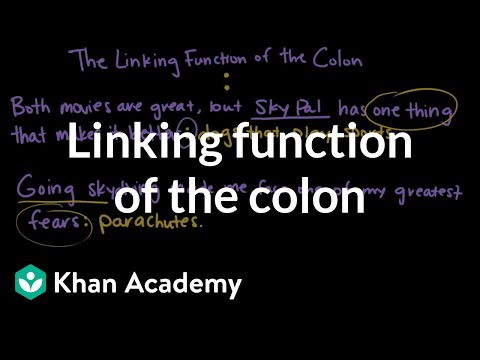3.06: Chapter 13: Punctuation
- Page ID
- 134480
14
Chapter 13: Punctuation
Rebekah Bennetch, Corey Owen, and Zachary Keesey
Learning Objectives
By the end of this chapter, you should be able to:
- List the differences between a comma, semicolon, and colon
- Explain when to use a semicolon instead of a comma in a list
- Determine which punctuation to use in a sentence
Key Terms and Concepts
- comma
- semicolon
- colon
- independent clause
- coordinating conjunction
- subordinate conjunction
“Punctuation marks are the road signs placed along the highway of our communication, to control speeds, provide directions and prevent head-on collisions” (Iyer, 2001).
The Basics
Consider how punctuation can change the meaning of the following run-on sentence:
I have two hours to kill someone come see me.The main function of punctuation is to separate phrases and clauses into meaningful units of information. Therefore, it is necessary to understand the basic structure of sentences—phrases and clauses—to understand the proper uses of punctuation. When punctuation is missing or incorrectly used, the reader may get a completely different message than the one intended. Take the sample sentence above. A period placed in the wrong place makes a huge difference in terms of the information that is communicated to the reader.
Example #1: I have two hours to kill. Someone come see me.Example: #2: I have two hours to kill someone. Come see me.
Here’s another example using commas.
Example #1: Let’s eat, grandma!Example #2: Let’s eat grandma!
Obviously, all the above examples communicate drastically different messages. Errors like this can not only confuse readers and waste time, but can have disastrous results in cases where the writing has legal, economic, or safety implications.
The article “Comma Quirk Irks Rogers” provides an example of how a punctuation error can have real world costs and consequences. One comma error in a 10-page contract cost Rogers Communication $2 million dollars (Robertson, 2016). If you need further evidence, read about the case of the trucker’s comma that went all the way to the supreme court, resulting in a $10 million dollar payout (Nast, 2017)!
There are several helpful rules that will help you determine where and how to use punctuation, but first, it might be helpful to understand the origins. Punctuation was initially developed to help people who were giving speeches or reading aloud. Various kinds of punctuation indicated when and for how long the reader should pause between phrases, clauses, and sentences:
Comma = 1 second pause
Semicolon = 2 second pause
Colon = 3 second pause
Period = 4 second pause
These “pause rules” can still offer some guidance, but they are not foolproof since there are many reasons that someone might pause while speaking. These reasons can be that the speaker simply ran out of breath, got distracted, or needed time to think of a word.
Below are some more consistent rules that you should follow to properly punctuate your sentences. These rules are presented in a numerical order to help you remember them more easily. We will start with commas, since they are one of the most common errors students make.
The Comma (,)
Commas are one of the most versatile pieces of punctuation out there. They can do many things, which means they are easy to use incorrectly. Before jumping into the five rules, here is a video that provides a quick overview. The video focuses on how commas are used with coordinating conjunctions and subordinate conjunctions which you should already be familiar with.
Link to Original Video: tinyurl.com/commaTED
Now let’s get to the rules.
Sentences are most often strongest when the subject is the first element of the sentence. However, sometimes the subject needs to be delayed until later in the sentence. Take a look at the following example:
The subject of the sentence is “we” but that is delayed by the introductory phrase “Before starting the project.” Including that comma helps the reader understand the meaning of the sentence by helping them identify the subject more easily.
While it is still possible that a reader will understand the sentence if the comma is left out, there are times where a comma is absolutely essential. Otherwise, the sentence will be unclear. In the following sentence, see if you can determine what the subject is without a comma to help you:
Based on that initial design concepts will be generated.
The subject—and therefore the meaning of the sentence—depends on where you place the comma. It could go in a couple of places. If the initial phrase is “Based on that,” and “that” refers to some previously stated idea, then the sentence indicates that the subject is “initial design concepts,” and the verb is “will be generated.” Here’s what that would look like:
However, if the initial phrase is “Based on that initial design,” then we already have an initial design to work from and do not have to generate one. We are now focusing on creating more advanced “concepts,” that will be “based on that initial design.” Here’s what that would look like:
So if the subject is not the first wordin your sentence, place a comma before it to clearly show what the subject is (hence “comma rule #1”). In each of the following examples, the subject of the main clause is bolded.
| After an introductory word | Finally, the design must consider all constraints. |
| After an introductory phrase | Initially, the design must meet early objectives. Meeting all the client’s needs, this design has the potential to be very successful. Unlike Emma, Karla loves mechatronics. |
| After a subordinate clause | If the design meets all the objectives, we will get a get a raise. Although we are slightly over budget, the design will be cost effective overall. While he interviews the client, she will do a site survey. |
When you place an interrupting word, phrase, or clause between the subject and verb, if that phrase is a non-essential element, you must enclose that phrase in commas (use the “bracket test”: if you could enclose it in brackets, then you can use commas). If the phrase is essential to the meaning, omit the commas. The words interrupting the subject and verb are bolded in the examples below.
| Interrupting word | Communication errors, unfortunately, can lead to disastrous design flaws. The rules, however, are quite easy to learn. |
| Interrupting Non-Essential Phrase or Clause (these phrases or clauses could be bracketed, and even omitted, without changing the meaning of the sentence) | The Johnson street bridge, commonly known as the “Blue Bridge,” had to be replaced. The new bridge, completed last year, is a rolling bascule design. The new bridge, which is a rolling bascule design, was completed last year. |
| Interrupting Essential phrases or clauses do not use commas; these phrases or clauses are essential to the meaning of the sentence | The objective that is most critical to our success is the first one. That bridge that needed replacing was the Blue Bridge. The man with the yellow hat belongs to Curious George. The student who has the best design will get an innovator’s award. |
If you would like more information on Essential vs Non-Essential elements, and when to use “that” vs “which,” check out this Grammar Girl link: Which versus That
Beware the “Pause Rule”—many comma rule #2 errors occur when a sentence has a long subject phrase followed by the verb “is.” People have the tendency to want to place a comma here, even though it is incorrect, simply because they would normally pause here when speaking. Below is an example of the wrong use:
The main thing that you must be sure to remember about the magnificent Chinese pandas of the southwest, is that they can be dangerous.In this case, a comma should not be used.
Whether you are listing 3 or more nouns, verb, adjectives, phrases, or even clauses, use commas to separate them. In general, do not place a comma before the first item or after the last item. If you are only listing two items, do not separate them with commas. Note what happens when you forget to put commas in the following sentence:
The author may have intended to list three things that she loves, but without punctuation, she ends up listing two things she loves to cook. Here is the correct version:
Only use the commas if there are three or more elements being listed. Make sure to list the elements in a consistent grammatical form (all nouns, or all verbs, or all using parallel phrasing).
| 2 listed elements (no commas needed) | All initial designs must incorporate mechanical structures and electrical systems. (2 nouns) Squirrels eat acorns and sleep in trees. (1 subject + 2 verbs) |
| 3 listed elements | The final design must incorporate mechanical, electrical, and software subsystems. (3 adjectives describing different subsystems) Squirrels eat acorns, sleep in trees, and dig holes in the garden. (3 verbs) The proposed designs must not go over budget, use more than the allotted equipment, or take longer than 1 week to construct. (3 verbs: go, use, and take) |
| faulty parallel phrasing (one of these things is not like the others…) | Proposed design concepts must adhere to all constraints, meet all objectives, and the components x must be on the approved list. (2 verbs and a 1 noun) The new bridge is aesthetically pleasing, structurally sound, and has x a pedestrian walkway. (2 adjectives and 1 verb) |
There is some debate about whether to place a comma before the “and” used before the final listed item. This comma, referred to as the Oxford Comma since it is required by Oxford University Press, is optional in many situations. For an optional piece of punctuation, the Oxford Comma has stirred up a surprising amount of controversy! Here’s a video that explains that controversy, if you’re interested.
Link to Original Video: tinyurl.com/oxfordcontr
While you might occasionally omit commas if the two clauses you want to join are very short (“She drove and he navigated.”), it is a good habit to separate them with a comma for the sake of clarity. The mnemonic device for remembering the coordinating conjunctions that can link two independent clauses together is FANBOYS (for, and, nor, but, or, yet, so). When you have two complete sentences, but you want to join them together to make one larger idea, use a comma before the coordinating conjunction.
| FANBOYS | Two clauses joined by a comma and coordinating conjunction |
| , for | Thank goodness next week is reading break, for we all need rest. |
| , and | Vampires drink blood, and zombies eat brains. |
| , nor | You should not play with vampires, nor should you hang around with zombies. |
| , but | The undead are not acceptable playmates, but werewolves are ok. |
| , or | You can simply avoid werewolves during the full moon, or you can lock them in the basement. |
| , yet | Some rules of etiquette suggest it is rude to lock someone in the basement, yet safety is of paramount concern. |
| , so | I think you understand my concerns, so I will leave it at that. |
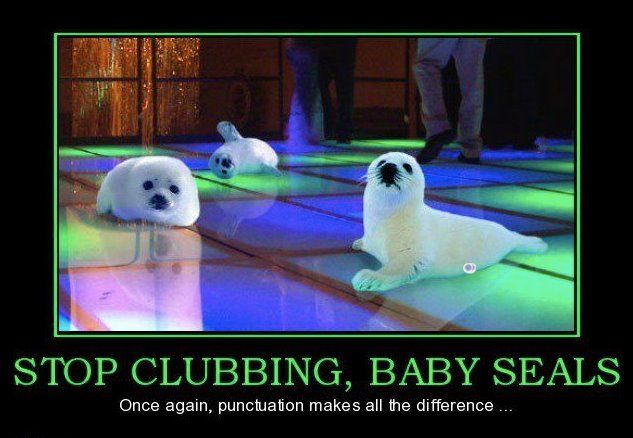
Learning comma rules takes practice, of course.
Practice makes perfect, in the long run.
Vampires make everyone nervous, even the bravest slayers.
I told you I need it by Wednesday, not Thursday.
Consider the difference between “It’s raining cats and dogs” and “It’s raining, cats and dogs.”
Exercise #1: Identify the Broken Rule and Fix
Below are six sentences. Identify the rule being broken, and put commas in the correct spots (if needed).
The Semicolon (;)
Most people are pretty confident when it comes to rules around the comma. The semicolon, on the other hand, is another story entirely. Are they more like a comma or more like a period? Well, the answer is that they can be work like both, depending on the situation of course! Here’s a video that provides an overview.
Link to Original Video: tinyurl.com/semicolorules
Semicolons are used to link ideas when something stronger than a comma is needed. A semicolon has three main functions. Here are the first two.
Semicolon Rule #1
Use a semicolon to join closely related independent clauses into one sentence:
If the two independent clauses are closely related in content, then a semicolon may be appropriate. Here is an example.
The subject in both sentences are both strongly related—indeed, in this case, they are engaged!
Semicolon Rule #2
Use a semicolon to link two sentences joined by a transition word (however, therefore, finally, moreover, etc.)
Transition words are a great way to connect your sentences. Here is an example:
You may have noticed that in both examples above, a semicolon works the same way a period does. If you could put a period there, then you can put a semicolon there—as long as both sentences are related. The semicolon simply connects the ideas more closely as part of one key idea and makes the pause between them a little shorter.
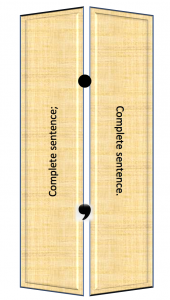
The main rule you must remember is that if you use a semicolon in this way, the clauses on either side of the semicolon must be complete sentences. You cannot use a semicolon to introduce a phrase or fragment.
Complete sentence; complete sentence.
Think of the semicolon as working like a hinge in a bi-fold door; it joins two complete door panels that each have their own frame together as one.
Also remember that you cannot simply use a comma instead of a semicolon to link the two clauses; doing so would result in a comma splice.
Semicolon Rule #3
Use a semicolon to separate items in a complex list where one or more of the items have internal punctuation
Take a look at this sentence.
The role of the vice-president will be to enhance the university’s external relations, strengthen its relationship with alumni, donors, and community leaders, and implement fundraising programs.Was it hard to read at all? It probably was because it’s unclear what list items should be grouped together. This is where the third function of the semicolon comes in. Here’s a correct example:
The role of the vice-president will be to enhance the university’s external relations; strengthen its relationship with alumni, donors, and community leaders; and implement fundraising programs.In this case, the semicolon separates long, complex list items that contain commas within them. Without the semicolon, we have a complicated sentence that is difficult to read.
The Colon (:)
Like the semicolon, a colon is another type of punctuation that confuses a lot of people. Thankfully, it serves a simple purpose. Here is a video to review its use:
Link to Original Video: tinyurl.com/linkingcolon
Keep in mind that when correctly used, colons are only placed where the sentence could come to a complete stop (i.e. you could put a period there instead).
| Amplification | The hurricane lashed the coastal community: within two hours, every tree on the waterfront had been blown down. |
| Example | The tour guide quoted Gerald Durrell’s opinion of pandas: “They are vile beasts who eat far too many leaves.” |
| List | Today we examined two geographical areas: the Nile and the Amazon. |
Remember that when introducing a list, example, or quotation with a colon, whatever comes before the colon should be a complete sentence. You should not write something like this:
Today we examined: x
Three important objectives we must consider are: x
If these cannot end in a period, they should not end in a colon. Whatever comes after the colon can be a fragment or list; it does not have to be a complete sentence.
Exercise #2: Comma, Semicolon, and Colon Review
Read the sentences below. Drag and drop the correct punctuation into each blank.
Key Takeaways
- Proper punctuation is essential when conveying meaning in writing. When used improperly, it can have huge financial consequences.
- Commas, semicolons, and colons link ideas in different ways.
- Commas can introduce the subject of a sentence, interrupt the subject and verb, be used to separate a list of three or more items, connect independent clauses with the addition of a coordinating conjunction, and indicate non-essential elements in a sentence.
- Semicolons can join closely related independent sentences, link two sentences with a transition word, and separate items in a complex list.
- Colons are only placed where the sentence could come to a complete stop. The information that follows the colon can amplify the information that came before it, provide an example, or provide a list.
Now that you are finished with this chapter, you can either click on one of the other sentence-level issues and learn about them, or continue on to the next required chapter.
Go To Another Topic
Sentence Fragments | Run-On Sentences | Verb Tense | Eliminating Wordiness
References
Fogarty, M. (2008, March 21). Which versus that. Quick and Dirty Tips. https://www.quickanddirtytips.com/education/grammar/which-versus-that-0
Iyer, P. (2001, June 24). In praise of the humble comma. TIME. https://content.time.com/time/magazine/article/0,9171,149453,00.html
Nast, C. (2017, March 17). A few words about that ten-million-Dollar serial comma. The New Yorker. https://www.newyorker.com/culture/culture-desk/a-few-words-about-that-ten-million-dollar-serial-comma
Robertson, G. (2006, August 6). Comma quirk irks Rogers. The Globe and Mail. https://www.theglobeandmail.com/report-on-business/comma-quirk-irks-rogers/article1101686/
Steck, E. (2014, September 10). Word play: Should you use the Oxford comma? Let’s review. Quietly Blog. https://blog.quiet.ly/community/should-you-use-the-oxford-comma/
Trayser, L. (2017, November 28). Say hello to the Switzerland of Oxford comma opinions. The Writing Cooperative. https://writingcooperative.com/say-hello-to-the-switzerland-of-oxford-comma-opinions-a96e9ab4afc8
Attributions
Image #1 by Phil Venditti on Flickr. It is licensed under Creative Commons Attribution 2.0 Canada License
This chapter is adapted from “Technical Writing Essentials” by Suzan Last (on BCcampus). It is licensed under Creative Commons Attribution 4.0 International License


